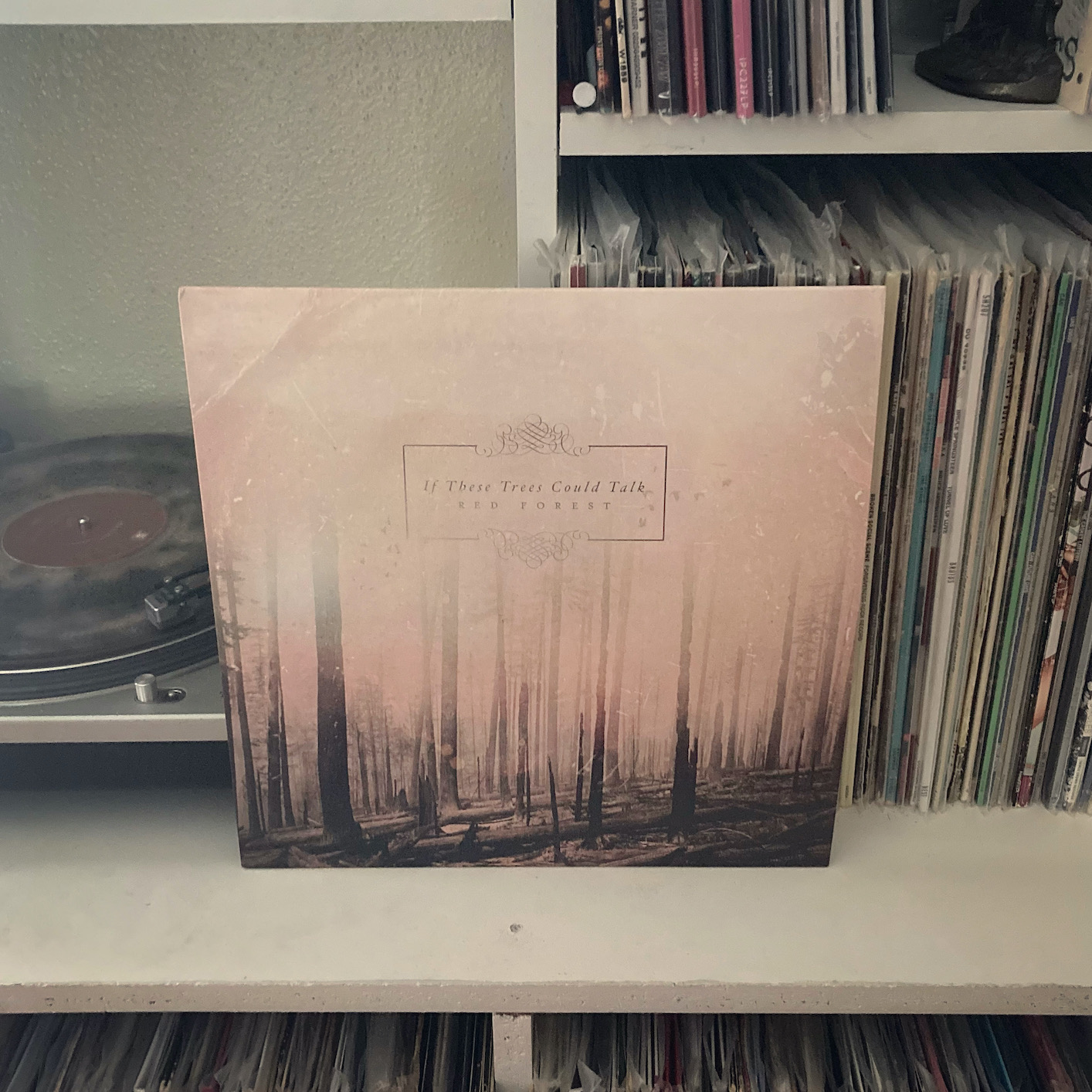 From the moment I heard The Bones of a Dying World, I was enamored. The way it infused post rock with prog, metal, and arena rock was absolutely spellbinding. It quickly became one of my favorite post rock albums of all time, and its allure has not faded since then.
From the moment I heard The Bones of a Dying World, I was enamored. The way it infused post rock with prog, metal, and arena rock was absolutely spellbinding. It quickly became one of my favorite post rock albums of all time, and its allure has not faded since then.
Imagine my surprise then when I saw that among longtime fans of If These Trees Could Talk, that album was considered a disappointment, compared unfavorably to Red Forest, which seemed to be universally heralded as the superior album.
With a copy of Red Forest now firmly in hand (with a beautiful gold foil design on the jacket!), I can now firmly state that I still don’t understand why fans would be disappointed in its follow-up. But as for me, I am grateful to have another album as masterful as the record I’ve loved for so long.
With The Bones… as a starting point, there are no surprises here. If anything, Bones is a bit slicker, dare I say “accessible.” The songs get to the point without much dawdling and don’t stray very much. It’s almost a pop record, as much as a metallic post rock record can be a pop record. On the other hand, Red Forest is a little more patient, at times a little darker.
“Breath of Life” opens the record with nearly two minutes of swelling atmosphere with nary a drum pattern or clear melody to be found until “The First Fire” is heralded in with a bouncing guitar line coated in delay—much like the opening of Bones—joined by dark bass and angular drums, building to a crushing climax. It’s certainly not a unique formula in the world of guitar-centric post rock (see also: Mogwai, Explosions in the Sky, and just about everyone else), but they do it with a sophisticated mixture of prog ambition and pop sensibility that calls to mind bands like Alan Parsons Project and Pink Floyd.
Much of the tracks on the first side run together, feeling more like movements in a classical piece than separate songs…which makes it difficult to talk about it track by track, but I would be remiss to not mention that there’s a track called “Barren Lands of the Modern Dinosaur.” The most impressive track on the album though is the epic, nine-minute closing track “When the Big Hand Buries the Twelve,” which is every bit as ominous as its title suggests. It shifts from cascading clean guitars to double-kick pedal heavy metal riffage to blistering, shredded guitar post rock catharsis.
Is it a good album? Yes. It is excellent. But there’s nothing here that would cause me to dismiss The Bones of a Dying World. Admitted, I worked through their discography backwards so I can’t totally see the perspective of long-time fans, but it seems to me that if anything, Bones accessibility may have come at the expense of this album’s more patient moments. This album is a little rougher around the edges, but those edges are less jagged pieces of unpolished metal and more planks of wood with a live edge. I guess some post rock purists would consider those edges necessary to the aesthetic, leaving Bones as a sterile, uninspired pastiche. I’m not one of them.